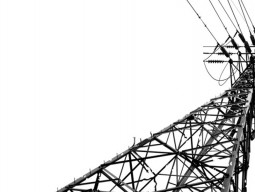
KARACHI: Contrary to general perception, the electricity crisis in Pakistan stems from years-old distribution system and has little to do with lack of generation capacity, according to the State Bank of Pakistan (SBP).
The system, which includes power lines and transformers, can handle load between 11,500-12,500MW on any given day.
“In other words, any load beyond this increases the likelihood of a breakdown in the distribution network, which is becoming more common,” the central bank said in its annual report on the state of the economy for 2013-14.
Load management, which is the difference between supply and demand of power, is in excess of 4000MW a day. But most of this gap results from rickety transmission and distribution system.
Up till the fiscal year 2012, lack of generation capacity was the main cause of electricity shortage. However, the last two years have seen the bottlenecks in the distribution network emerge as a major constraint to supply.
“Almost 65% of load management in fiscal 2014 was due to faulty distribution network,” it said. The problem exacerbates when public pressure forces distribution companies to supply more power as happened during July 23 and August 1, 2013.
“Burden on distribution networks exceeded 15,000MW for an extended period of time. As a result, electric feeders tripped from the overload, and it took almost 15 days for repair work.” In those days, nearly 80% of load management was due to distribution constraints.
SBP regrets that despite this flaw in the system, policymakers continue to emphasise on adding more generation capacity instead of addressing core issues like price distortion, high generation cost and low efficiency of distribution system.
It was critical of the Power Policy 1994, which led to investment in independent power plants based on furnace oil and gas. Over the years, the shortage of gas has made Pakistan a relatively large user of furnace oil in its power plants.
“In retrospect, one can argue that had such generous tariffs offered to IPPs, were also available to hydel, the country would have been in much more comfortable position in view of low cost of power generation.”
Thermal generation mix has shifted in favour of furnace oil in the last six years. In 2008-09, oil accounted for 39.4% of generation and gas was used for 60.4%.
In the year 2013-14, 61.9% of thermal generation was on oil whereas gas cater to just 37.9%.
Power consumption mix is also heavily skewed towards domestic consumers who use around 47% of electricity while industry gets only 29%.
“This is in sharp contrast with Bangladesh where industry consumes 55% and households get 34%.”
Around 88% losses incur by distribution companies stem from 11kv and below feeders which primarily cater to households, it said.
The average cost of generation is Rs14.95 per kWh while realized tariff from all consumers comes to Rs11.21 kWh. But households pay only Rs8.66 kWh.
“During the last five years, the government has spent on average Rs304 billion every year to subsidise power consumption and most of it goes to households.”
It also highlighted a distortion in the subsidy model as households using more than two air conditioners get Rs6,631 per month as subsidy whereas lifeline users receive only Rs420.
Published in The Express Tribune, December 11th, 2014.
Like Business on Facebook, follow @TribuneBiz on Twitter to stay informed and join in the conversation.
COMMENTS (1)
Comments are moderated and generally will be posted if they are on-topic and not abusive.
For more information, please see our Comments FAQ



































































Why is electricity the business of the State Bank?